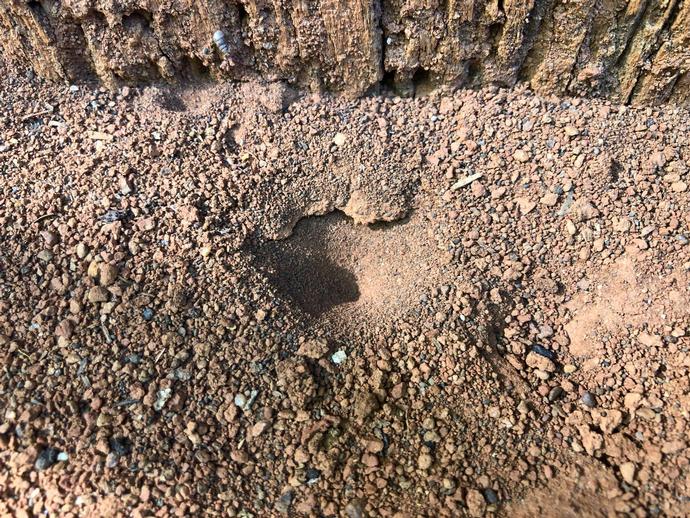February 27, 2021
We're reaching into the archives for today's #BenInNature update presented by our friends at Carter Bank & Trust! The following post was originally published on May 28, 2020.
You've probably walked through an area with loose, sandy soil and noticed a strange little pit in the ground. Most folks refer to these as "doodlebugs," but the critter at the bottom of that little pit is a bit fiercer than that name would suggest.
These pits are created by the larvae of antlions, a group of about 2,000 species belonging to the family Myrmeleontidae. Some species of antlion larvae live in leaf litter, but the "doodlebug" variety digs pits in the sand.
The larva lies in wait at the bottom of the pit, concealed by the sandy soil. When an insect -- often an ant -- falls into the pit, the antlion larva will spring into action. If the prey slides all the way to the bottom of the pit, the antlion will grab it with its mandibles, inject it with venom and digestive enzymes, and then suck out its delicious juices. If the prey doesn't fall all the way to the bottom of the pit, the antlion will begin kicking sand at the sides of the pit, which destroys the structural integrity and causes a landslide that carries the prey all the way to the antlion's jaws.
In the second picture, you can see an antlion larva that I dug up (I hated to inconvenience the little guy, but it's all in the name of science). Adult antlions look pretty different from their larval forms. Fortunately, I found one of those too, so if you'd like to see what an adult antlion looks like, check back tomorrow!
ABOUT #BenInNature
Social distancing can be difficult, but it presents a great opportunity to become reacquainted with nature. In this series of posts, Administrator of Science Ben Williams ventures outdoors to record a snapshot of the unique sights that can be found in the natural world. New updates are posted Monday - Friday, with previous posts highlighted on the weekends. This series of posts is made possible thanks to the support of VMNH Corporate Partner Carter Bank & Trust (www.cbtcares.com)
NATURE PHOTO IDENTIFICATIONS
If you discover something in nature that you would like help identifying, be sure to message us right here on Facebook with a picture (please include location and date of picture) and we'll have our experts help you identify it!

 Hours & Admissions
Hours & Admissions Directions
Directions

